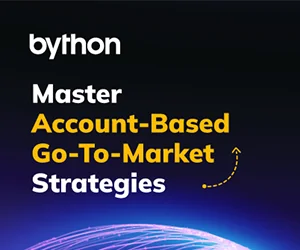Small businesses offer banks a significant opportunity to bolster their revenues in the face of volatile interest rates and the looming threat of economic unrest. And don’t just take our word for it; here are some staggering indices:
The US is home to over 30 million SMEs, representing 99% of the nation’s enterprises.
SME jobs collectively cover over 60 million individuals or 47% of private-sector employment.
Based on a McKinsey report, small-business banking generates an estimated $150 billion in annual revenues for the entire US banking industry, including loans, deposits, cards, cash management, or merchant services. That makes up roughly 17% of the total US financial services sector.
Financial institutions can build on this already strong bedrock with tailored banking services that cater to the SME segment better.
-
Personalized Banking Solutions
Small business proprietors are looking for solutions offering individualized support and user-friendliness. Too often, financial institutions use identical channels and resources for micro-enterprises as they do for individuals, and this fails to offer the services a business owner actually needs according to a study by J.D. Power. This adversely affects SME clients.
Banks must consolidate the data they gather from SME clients to extract practical and significant insights. These must be promptly communicated to the consumer to facilitate individualized guidance.
Financial institutions with robust data capabilities can establish banking partnerships with SMBs. Clients can get personalized alerts on action items and recommendations, creating a virtuous cycle of financial and business decisions anchored in validated insights.
Effective personalization of banking services to serve small businesses better will comprise:
- Visibility: Enrich, classify, and cleanse financial data from multiple channels to reveal expenditure and income trends while discovering anomalies.
- Recommendations: Offer a personalized dashboard with the capacity to figure out which small and medium-sized enterprises (SMEs) need funding, lines of credit, invoicing offers, or other types of business finance products.
- Forecasts: Deliver customized projections focusing on cash flow and recommend strategies for managing critical cash flow periods.
-
Technological Integration and Digital Services
Small enterprises have quickly recognized the advantages of adopting digital technologies. Along with expanding consumer reach and improving efficiency, digital transformation has become a crucial success factor for SMBs. However, finance is one sector that’s been a laggard on this journey.
Since the beginning, traditional financial services have consistently failed to address SME requirements. Their restricted access to financial data, arduous documentation, and protracted approval processes have hindered their capacity to make well-informed decisions or capitalize on opportunities. In such circumstances, digital banking services can be of invaluable assistance.
Today, SMBs need solutions that minimize friction and the stress associated with financial activities. In addition to providing low-touch financing options, they require automated payment methods, filing of taxes, and invoice and payroll management.
To address this, banks need to deliver a 360-degree offerings bouquet for SMEs:
- Financial management: Accounting software-integrated platforms offer real-time transaction monitoring, expense classification, and financial reporting.
- Digital security mechanisms: With secure login protocols and multi-factor authentication, real-time transaction monitoring and automated alerts for suspicious activities are implemented.
- Accounts payable and receivable: Real-time financial insights and user-friendly tools for creating invoices, tracking payments, and setting up recurring payments.
-
Streamline Loan and Credit Processes
Credit and financing accessibility is an essential component of SME progress and development. Plagued by lengthy approval processes and stringent eligibility requirements, many small businesses can’t obtain loans from conventional banks.
To rapidly evaluate the creditworthiness of SMEs, banks must employ sophisticated artificial intelligence (AI) analytics and applicant risk profiling. The key is to improve accuracy and inclusiveness while cutting down bias.
Banks can offer optimized lending alternatives to small and medium-sized enterprises (SMEs) by examining transaction history, liquidity, and overall financial health. By doing this, they not only enhance the actual release of the proposed funds/assets – but also guarantee that the loan terms align with the business’s specific requirements.
However, banks often face challenges developing suitable lending solutions to serve their SME clients. Integrating data-driven methodologies that are automation-ready and can be scaled with an eye on accuracy and discretion is critical. This will aid in reducing service charges for SMEs and the risk costs associated with loans.
The most notable action points here are:
- Look at non-conventional data sources: Leverage transaction data, online sales information, or telco data to optimize credit models and assess the risks associated with lending.
- Make workflows digital: Enhance our level and extent of digital interaction with clients while mitigating dependencies on manual procedures for authorization.
- Contextualize loans and credit flow: Take a modular approach to SME lending by integrating technological platforms and connecting loans to existing systems.
-
Financial Advisory and Support Services
76% of small businesses have regularly expressed interest in obtaining guidance from their primary financial institution; therefore, banks are looking at this major opportunity for financial advisory.
In fact, when small businesses work with banks on general fiscal advice – they witness significant gains in NPS ratings like satisfaction, propensity to recommend, and likelihood to accept the offering.
Further, SMEs who receive help are more likely to use the bank’s cash and wealth management services and apply for credit. Banks must use various methods to unlock these mutually beneficial outcomes, including in-person and digital channels when advising small enterprises.
Three key areas of advisory need to be covered here:
- Spending and saving guidance: Obtaining insights into profitability, investments, and budgeting can help organizations make more informed decisions on where to invest and spend.
- Improving credit scores: Provide SMBs with information on their current credit scores, how this is determined, why it is significant, and how to establish creditworthiness.
- Avoiding fees: Describe the monthly fee for the primary business checking account, late fee structures, penalties for late payments, and fees associated with business banking services.
-
Build Strong Relationships through Community Engagement
The small business client segment is usually a shared responsibility between retail and branch associates and product administrators with expertise in banking products. Effectively nurturing this sector will require a senior leader and a well-organized team to collaborate closely.
Banking leadership needs to recognize the importance of engaging at the grassroots level and invest in relationships to provide SMEs with an ecosystem of support. This entails:
- Partnering with local organizations: Local communities, advocacy groups, and nonprofits can help banks find a firmer foothold in SME markets and develop innovative products.
- Balancing the human with digital: Trained customer service reps can make banking services more accessible for business owners with different needs and backgrounds.
- Informing interactions with data: Instead of starting every conversation from scratch, one-on-one interactions should take off from existing data and a keen focus on the customer.
The Analysis Challenge Holding Back Small Business Banking Services
Small and medium-sized enterprises (SMEs) are seen as an underrepresented segment, falling somewhere in between corporate and retail banking; this leads to the absence of a natural organizational “home” or “partner” for them when it comes to banking.
SMEs represent an extensive range of business sizes: micro-sized enterprises show comparable dynamics to personal or high-value consumers, while larger-scale enterprises have client profiles and requirements akin to commercial banking clients.
This uncertainty has held back efficiency, consistency, and innovation in banking services for SMEs. However, modern data analytics and adaptive models offer a solution for financial institutions to classify, tag, and serve these customers better.
With advancements in technology and operating models, it is possible to carve out a “profitable offerings” niche that attracts and retains the largest portion of the US economy in terms of sheer numbers.







